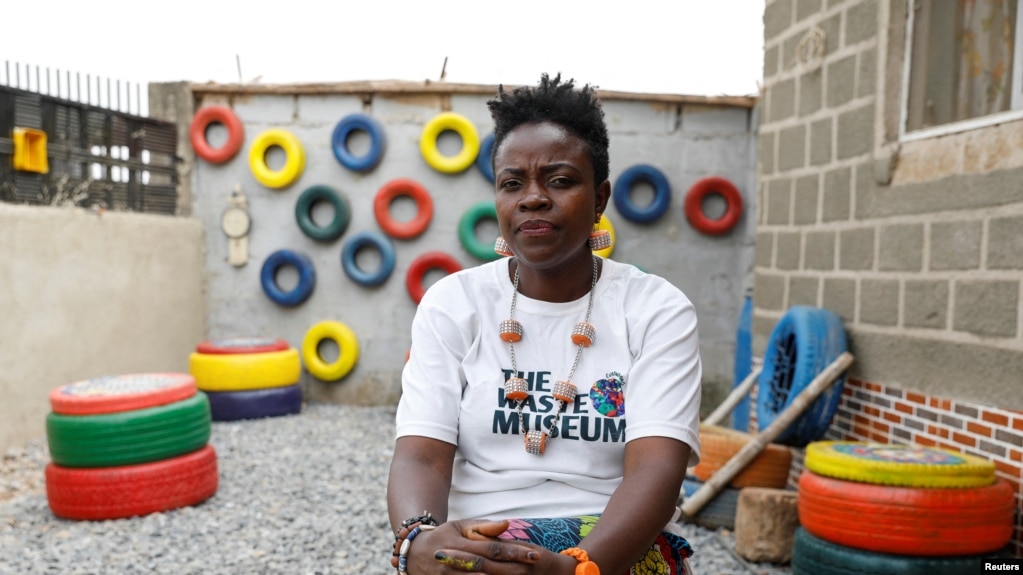
Jumoke Olowookere, founder of the Waste Museum, sits for a photograph after talking with Reuters at the museum in Ibadan, Nigeria on February 23, 2022. (REUTERS/Temilade Adelaja)
Jumoke Olowookere’s latest works are made from used vehicle tires painted in red, yellow and green. The creations join a collection of used plastic, cloth, wine corks, corn husks and other materials in what is called “Waste Museum” in Nigeria.
Olowookere said the museum is the first of its kind in Africa. She is part of a growing number of Nigerians who are using waste material to make art and clothing. Their work calls attention to the damaging effects of waste on the environment.
At the recent opening ceremony for the museum in Ibadan city, she said, “With the Waste Museum, we are showcasing the value of waste.”
“We want people to see how waste can be turned into wealth. Our ultimate goal is to ensure that no waste goes into the landfill –– a zero-waste future is possible,” she added.
Idea for museum
Olowookere said she had the idea for a museum when she saw the amount of waste that came from her home. She started collecting the waste while reading up on how to reduce and recycle waste. Recycling is a process to make something new from something that has been used before.
With support from the United States African Development Foundation, the Waste Museum was born.
Olowookere said she collected waste material from people’s homes for her works. And she also makes equipment for play areas for children at school, called playgrounds. Work from other artists is also shown at the museum. It includes furniture and housing material made from old car tires and jewelry produced from bottle tops.

The “Waste Museum” also provides environmental education and helps women and youth from underserved communities with upcycling skills. Upcycling reuses waste material to create a new product.
Concerns over waste, pollution
Nigeria is Africa’s biggest oil producer. Additionally, it has more than 200 million people. Plastic waste, like leftover bags, and food and drink containers, are commonly thrown into the streets and other public areas. Throwing waste into public areas and the environment is called littering.
A lot of waste in Nigeria ends up in the waterways that lead into the Gulf of Guinea, an area in the Atlantic Ocean. That has led to concerns about the amount of plastic entering the sea.
Olowookere told Reuters, “We have a long way to go to get to that sustainable world without waste. We need to get up and take responsibility for our waste. Stop littering the world with your waste.”
I’m Gregory Stachel.
Seun Sanni reported this story for Reuters. Gregory Stachel adapted it for VOA Learning English with additional information from United States African Development Foundation.
____________________________________________________________________
Words in This Story
museum – n. a building in which interesting and valuable things (such as paintings and sculptures or scientific or historical objects) are collected and shown to the public
showcase – v. to show (something or someone) in an attractive or favorable way
ultimate – adj. happening or coming at the end of a process or series of events
landfill – n. an area where waste is buried under the ground
furniture – n. chairs, tables, beds, and other objects that are used to make a room ready for use
sustainable – adj. involving methods that do not completely use up or destroy natural resources
We want to hear from you. Write to us in the Comments section, and visit WWW.VOA-STORY.COM